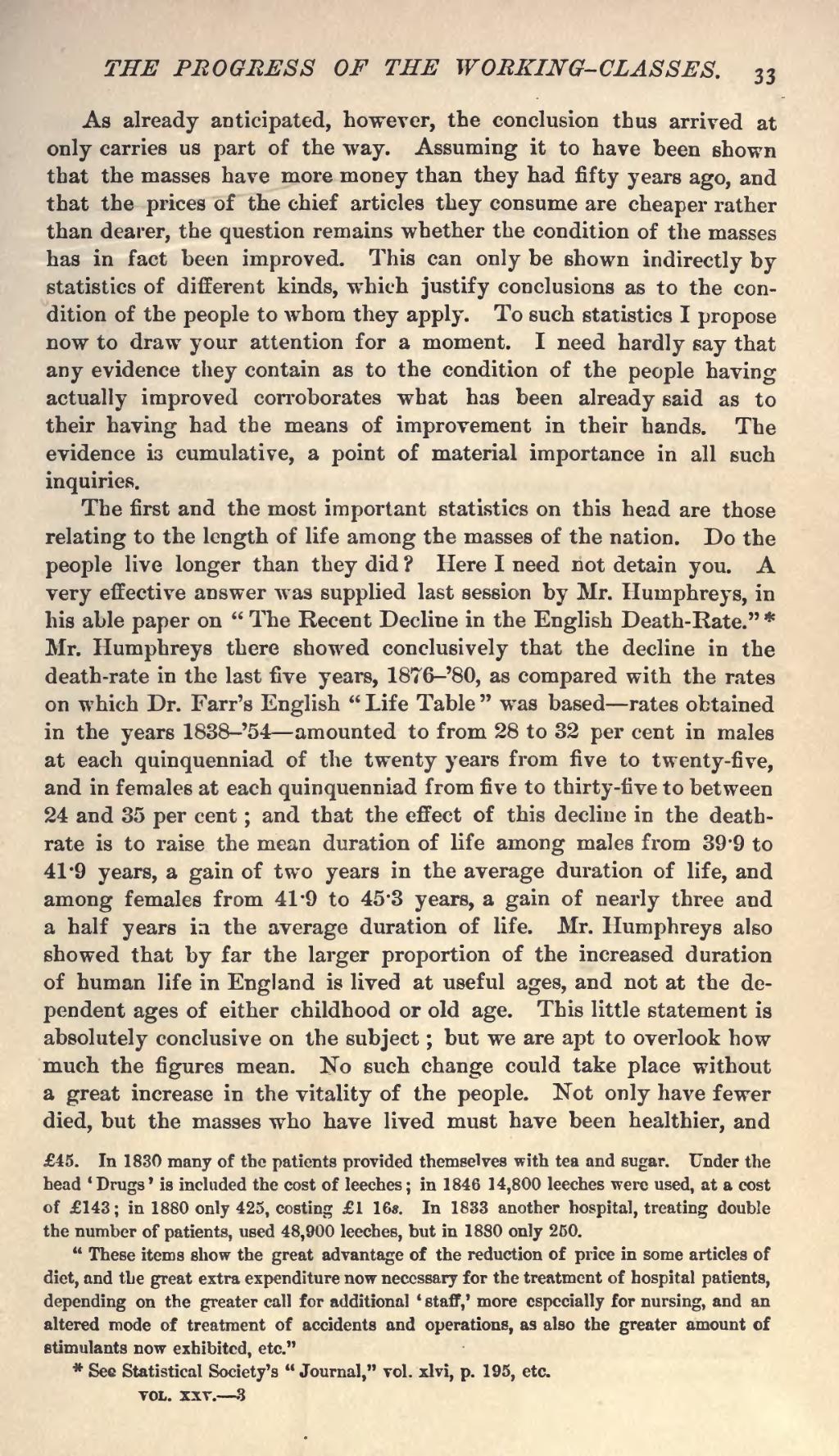As already anticipated, however, the conclusion thus arrived at only carries us part of the way. Assuming it to have been shown that the masses have more money than they had fifty years ago, and that the prices of the chief articles they consume are cheaper rather than dearer, the question remains whether the condition of the masses has in fact been improved. This can only be shown indirectly by statistics of different kinds, which justify conclusions as to the condition of the people to whom they apply. To such statistics I propose now to draw your attention for a moment. I need hardly say that any evidence they contain as to the condition of the people having actually improved corroborates what has been already said as to their having had the means of improvement in their hands. The evidence is cumulative, a point of material importance in all such inquiries.
The first and the most important statistics on this head are those relating to the length of life among the masses of the nation. Do the people live longer than they did? Here I need not detain you. A very effective answer was supplied last session by Mr. Humphreys, in his able paper on "The Recent Decline in the English Death-Rate."[1] Mr. Humphreys there showed conclusively that the decline in the death-rate in the last five years, 1876-'80, as compared with the rates on which Dr. Farr's English "Life Table" was based—rates obtained in the years 1838-'54—amounted to from 28 to 32 per cent in males at each quinquenniad of the twenty years from five to twenty-five, and in females at each quinquenniad from five to thirty-five to between 24 and 35 per cent; and that the effect of this decline in the death-rate is to raise the mean duration of life among males from 39·9 to 41·9 years, a gain of two years in the average duration of life, and among females from 41·9 to 45·3 years, a gain of nearly three and a half years in the average duration of life. Mr. Humphreys also showed that by far the larger proportion of the increased duration of human life in England is lived at useful ages, and not at the dependent ages of either childhood or old age. This little statement is absolutely conclusive on the subject; but we are apt to overlook how much the figures mean. No such change could take place without a great increase in the vitality of the people. Not only have fewer died, but the masses who have lived must have been healthier, and
- ↑ See Statistical Society's "Journal," vol. xlvi, p. 195, etc.
£45. In 1830 many of the patients provided themselves with tea and sugar. Under the head 'Drugs' is included the cost of leeches; in 1846 14,800 leeches were used, at a cost of £143; in 1880 only 425, costing £1 16s. In 1833 another hospital, treating double the number of patients, used 48,900 leeches, but in 1880 only 250.
"These items show the great advantage of the reduction of price in some articles of diet, and the great extra expenditure now necessary for the treatment of hospital patients, depending on the greater call for additional 'staff,' more especially for nursing, and an altered mode of treatment of accidents and operations, as also the greater amount of stimulants now exhibited, etc."